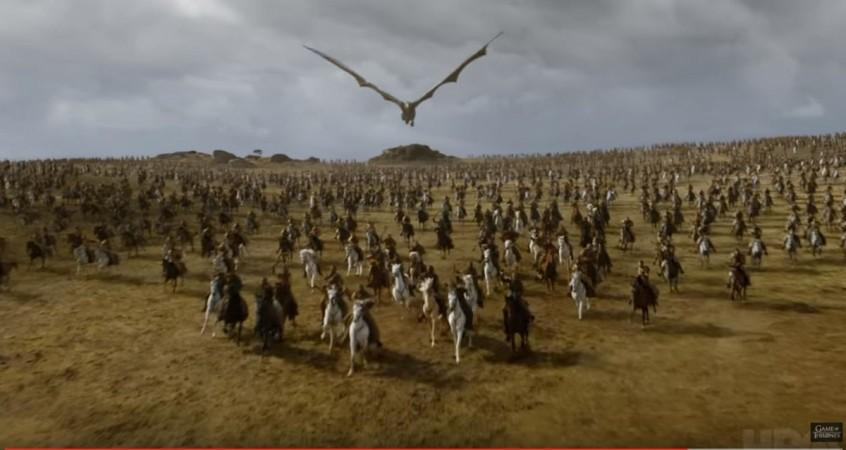
The magical world of Game of Thrones, the popular television series, is full of phenomena that leave many of us baffled. The chaotic climate and strangely long seasons are among those many things from the world of dragons, kings and queens that ardent viewers of the show would probably love to have them explained.
In a bid to find what could have caused the strange extended seasons, scientists from the Universities of Bristol, Cardiff, and Southampton used a climate model to simulate and explore the mysterious climate of the world of Game of Thrones. The model helped the scientists present a theory for the changing seasons, based on variations in the orbit of the planet around the Sun.
The climate model yielded results showing that The Wall has a climate in winter similar to that of Lapland, Finland's northernmost region, whereas Casterly Rock -- the ancestral stronghold of House Lannister -- has a climate similar to that of Houston, Texas, or Changsha in China.
The scientists also explored the implications of their theory to explain phenomena such as the dominance of the seas by the Iron Fleet, the likely attack plans of invading dragons from Essos, and the trading routes between Westeros and the Free Cities across the Narrow Sea.
In addition, temperatures predicted by the climate model also indicated the likely hibernation zones of the White Walkers in summer.

"Because climate models are based on fundamental scientific processes, they are able not only to simulate the climate of the modern Earth, but can also be easily adapted to simulate any planet, real or imagined, so long as the underlying continental positions and heights, and ocean depths are known," Professor Dan Lunt, from the School of Geographical Sciences and Cabot Institute at the University of Bristol, said in a statement.
The fascinating findings were published in a mock journal article, which is attributed to Samwell Tarly, a character who is studying to become a "Maester" in the Citadel in Oldtown in Westeros. Interestingly, the article is also available in Dothraki and High Valyrian, two fictional languages constructed to be used in Game of Thrones.
The article explained that the extended seasons were likely caused by a "tumbling" of the tilt of the spinning axis of the planet as it orbits the Sun. This might have happened in such a way that the same Hemisphere always tilts towards the Sun, according to the scientists.

Also modelled was the global warming that would occur if concentrations of greenhouse gases in the atmosphere were to be doubled because of increased levels of carbon dioxide and methane emissions from dragons and the excessive use of wildfire.
Scientists estimated that the value of climate sensitivity for the world of Game of Thrones is 2.1 degree Celsius, which is within the range of 1.5-4.5 degree Celsius as assessed by the Intergovernmental Panel on Climate Change (IPCC) for the "real" Earth.
The IPCC "has shown that climate models can successfully simulate climates from the freezing world of the last Ice Age, to the intense warmth of the 'Eocene greenhouse', 50 million years ago. These same models are then used to simulate the future climate of our planet," Professor Gavin Foster from the University of Southampton said in the statement.







!['Lip lock, pressure, pyaar': Vidya Balan- Pratik Gandhi shine in non-judgmental infidelity romcom Do Aur Do Pyaar [ Review]](https://data1.ibtimes.co.in/en/full/797104/lip-lock-pressure-pyaar-vidya-balan-pratik-gandhi-shine-non-judgmental-infidelity-romcom.jpg?w=220&h=138)








